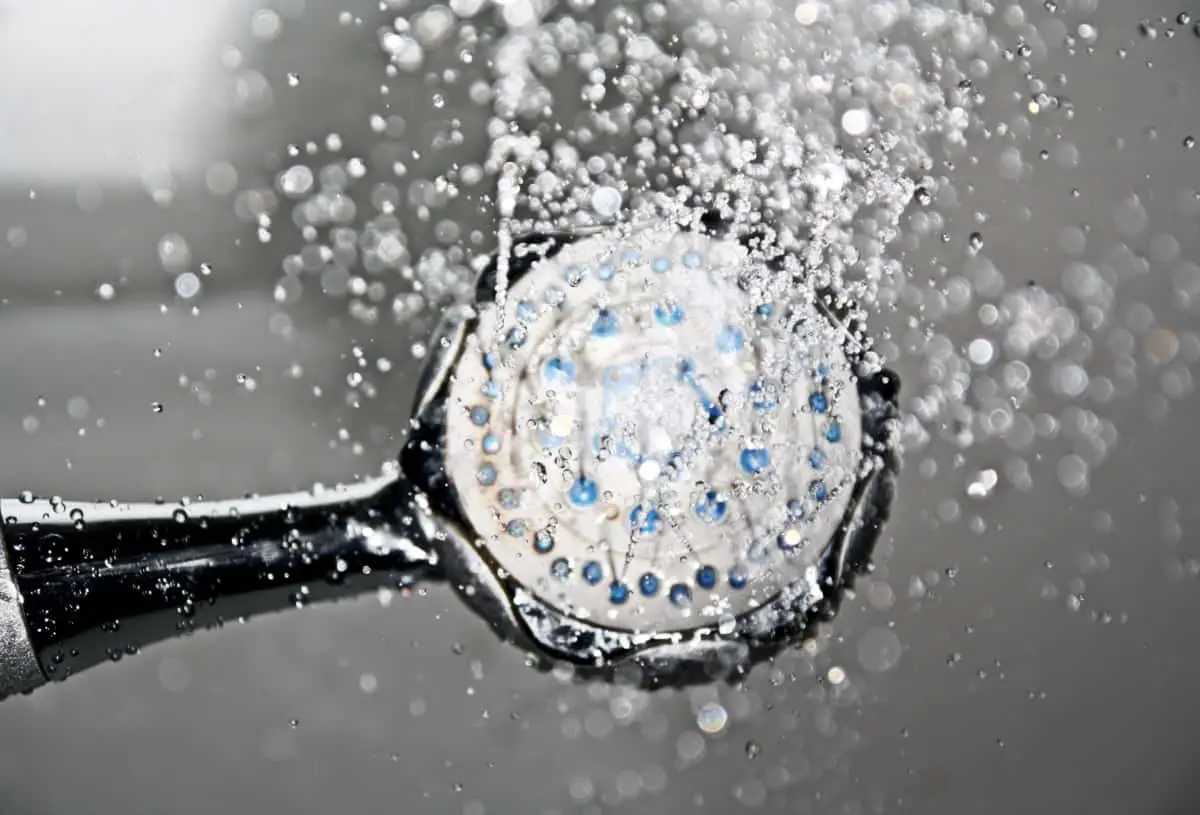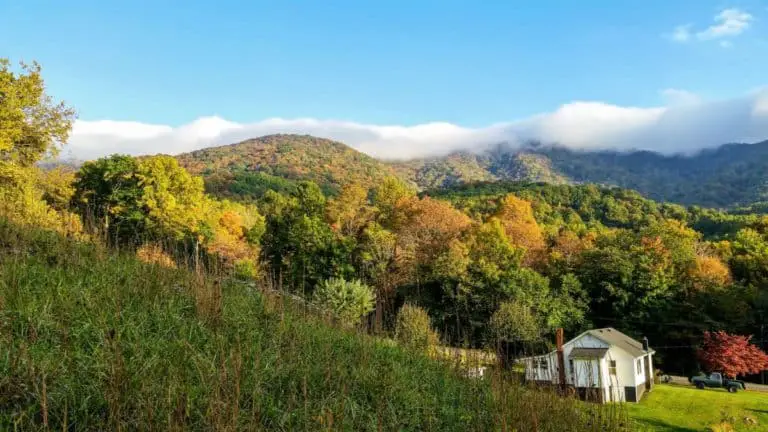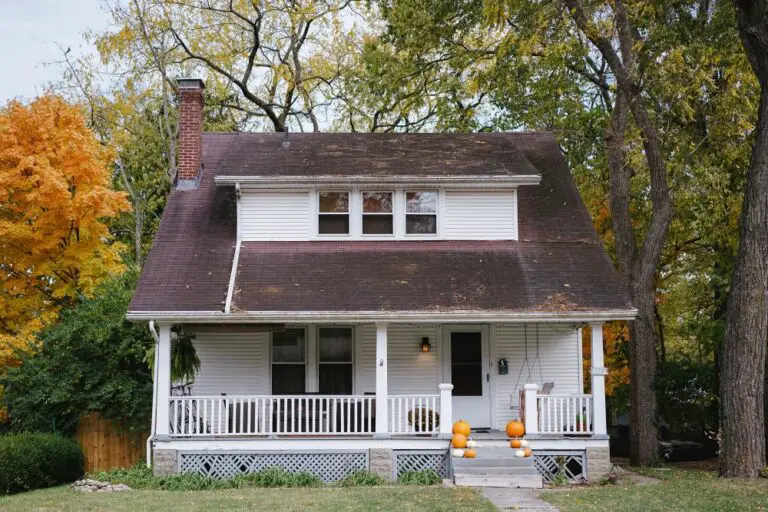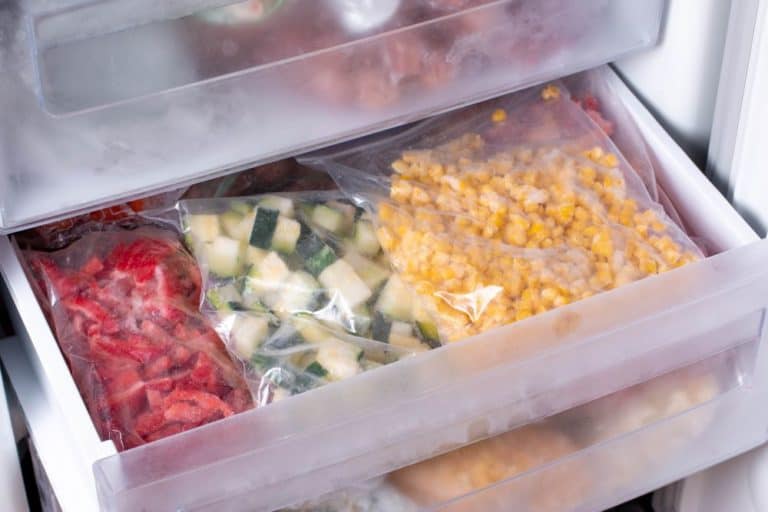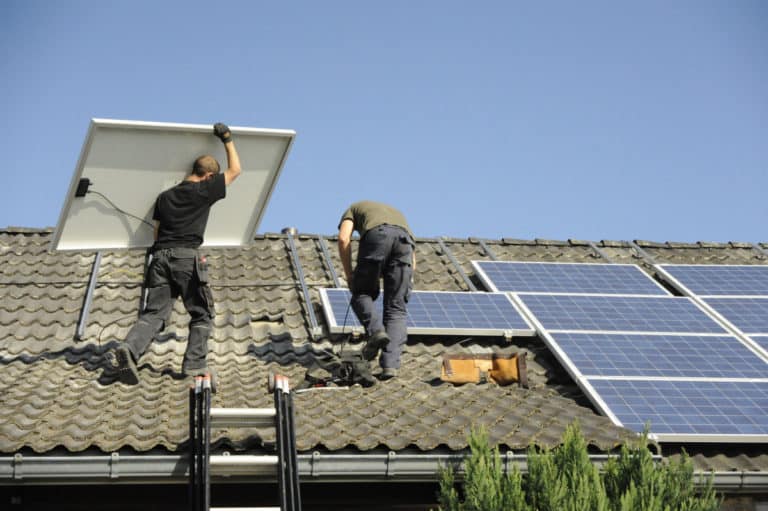Off-Grid Shower Systems: Everything you Need to Know
If your home is off the grid or soon will be, there is no need to give up the luxury of a hot shower. With some creative thinking, any off-grid home can have a practical working shower.
To design an effective off-grid shower system, you will need to decide how you will heat the water, provide water pressure and what you will do with the wastewater. The best off-grid showers are those that fit well with your alternative power and water supplies.
There are so many different ways of building an off-grid shower; it’s necessary to understand how they work to make them successful. Whether you’re planning on installing your own shower or employing a professional, this guide has everything you need to know.
Table of Contents
What to consider when designing an off-grid shower system
When creating your off-grid shower system, there are lots of things to think about. For the best results, you will need to carefully plan your design based on the resources available in your home, as well as your needs and preferences.
It may also be useful to consider:
Will you fit it indoors or outdoors?
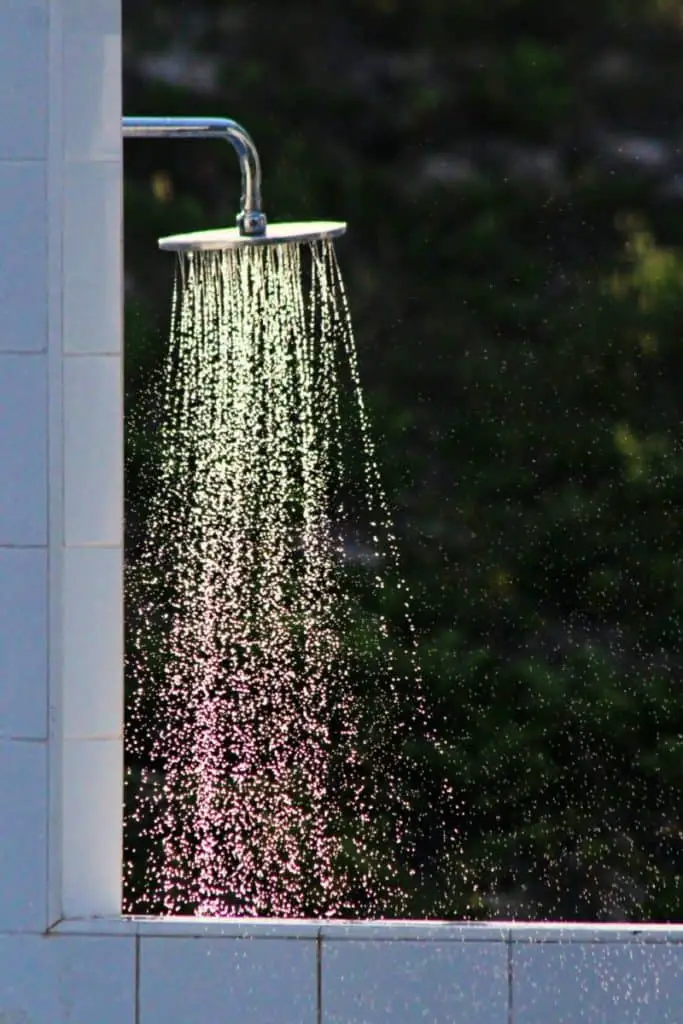
Depending on your local climate, you may be able to install an outdoor shower or build an external shower cubicle. Indoor showers are likely to need to fit your existing water and heating systems, whereas outdoor systems are easier to install as separate stand-alone units.
You could run the water directly from a cistern to the shower without the need to run it through any complicated home plumbing systems. It’s also easier to direct the wastewater into a leech bed or run-off area.
Are there any zoning restrictions and building codes that restrict your options?
Zoning restrictions and building codes, particularly those in urban or suburban areas, can sometimes affect your water and waste systems. They may prevent you from using rainwater or insist that all wastewater enters a septic tank.
It’s unlikely that these issues will entirely prevent you from installing an off-grid shower, but it’s worth being aware of them so you can follow any necessary procedures and avoid any complicated legal matters later.
How much power is available from your off-grid energy supply?
Heating water for a hot shower can take a lot of power. If you already have an alternate energy source such as solar panels or a wind turbine, you will need to calculate if you have enough in your system to take on the extra load. On the other hand, if you’re still in the process of leaving the grid and are still designing your system, you must take into account any power you may need to heat and pump water.
This article will help you to size up a solar panel system: How Many Solar Panels Do I Need to Run My Home Off-Grid?
However, if you don’t have much power to spare or you want to keep your electricity use to a minimum, you still have a few options. You could choose an energy-efficient shower or run a separate on-demand propane heater.
How much will it cost?
How much money do you have in your budget for this project? If money is no object, there are numerous gadgets that will help you fit an excellent shower, but if things are a little tighter, you may want to build it yourself using recycled or reclaimed materials.
Off-grid shower systems
An off-grid shower system has three main challenges. How you choose to tackle them will dictate what sort of shower you can build:
1. Heating the water
Likely, most of your home’s power is already allocated to other appliances. But with some outside of the box thinking, you can use one of several ways to heat your water.
Solar heater
Solar heaters are an incredibly efficient way of using sunlight to heat water. In their simplest form, water is fed through a narrow tube that is exposed to direct sunlight. The water warms up as it passes through, and it can then be stored for a short time or used directly in a shower.
Solar water heating panels look like solar panels and take up a similar amount of space. They usually consist of a series of narrow pipes arranged into a flat rectangle to be mounted on a roof or on a frame.
There are two main types of solar heating panels, and which one you use depends on your local climate:
Direct solar water heater – These are the most straight forward option. Water is simply fed into the heating panel’s pipes, and as it flows through them, the sun warms it up. Then it travels back into your home and is collected in a storage tank for use. The drawback of this type is that if you live in colder climates, the water in the panels is likely to freeze in cold weather.
Indirect solar water heater – These are specially designed for climates where freezing is expected. The panel tubes are filled with an antifreeze mixture, which acts as a heat transfer fluid. This fluid is then used to heat the water, which can then be used in your home.
If you prefer to make your own solar water heater, they’re remarkably easy to put together:
Pros
- They use sunlight to produce heat
- They can be bought and fixed to your roof.
- You can opt to make your own from a few basic pieces of equipment.
- They don’t use electricity.
Cons
- The water may not get as hot as you’d like.
- They will only work on sunny days.
- Hot water produced in this way must be used almost immediately; otherwise, it will cool down.
Solar electric
If you already have solar panels and you don’t want to have to rig up a separate solar heater, you can opt to create hot water for your shower direct from them. The power produced from your panels can be used to run a small DC water heater or go through your inverter to power an AC heater.
Related reading: Guide to off-grid solar inverters.
This is a quick and easy way to heat water for your shower, but it’s likely to be the most expensive and use the most power. Even if you choose a small, energy-efficient, tankless shower heater, it will still use a significant electricity amount.
If you have plenty of solar panels, year-round sun and a large battery storage bank, this may well be the best option for you.
Pros
- Solar energy harvested from a panel can be stored in a battery until you want to heat your water.
- There are lots of electric shower heater available.
- They’re usually easy to install and will fit with the existing plumbing in your home.
- You can choose from a small number of DC heaters that could be run directly from a solar panel or battery.
Cons
- Even efficient electric heaters use large amounts of power.
Propane heater
Propane heaters are another handy way to heat water with no need to use electricity. However, you will need to keep stocked up on propane.
With propane water heaters, you can choose between those with tanks or tankless systems. Tankless systems use large bursts of energy to heat water on demand as it’s needed quickly, and those with tanks heat a large amount all at once to be used throughout the day.
Tankless systems are smaller, but they usually require more power and can only supply one or two appliances at a time without becoming overloaded. Propane versions can be excellent but are often higher in price than their electric counterparts. They also require adequate ventilation and carbon monoxide detectors, which can drive up the cost of installation.
Pros
- Propane heaters won’t use up your solar power.
- Once they are installed, you will have a steady supply of hot water when you need it, whatever the weather.
- Tankless propane heaters are small and easy to install.
Cons
- Propane is an additional expenditure.
- It requires extra ventilation.
Wood-fired water heater
Wood-fired boilers are beautifully simple and are usually cheap to buy or easy to build. Commercially available units are most likely to be part of larger central heating systems, so if you want one to be solely dedicated to your shower, you may need to get creative and make your own:
If you live in an old home that used to run wood burners, you may already have old stoves or flues that you can adapt to the new system.
Pros
- Can be cheaper to buy and install
- Your home may already have stoves or flues
- Generally good efficiency
Cons
- Burners, chimneys, and flues need regular cleaning.
- You need a supply of wood to burn.
2. Getting the water to the shower
To get water to flow out of your shower head, you will need water pressure. City water usually flows from high towers and is given an extra push from strategically placed pumping stations. This means that there is already enough pressure to push it out of your showerhead when it arrives in your home.
However, if you’re using an alternative water supply, like a well or cistern of filtered rainwater, you’ll need to find your own way to get it moving.
Whether you want to supply a single shower with water or pump water to all the faucets and water sources in your home, these are three common ways to get the water flowing:
Gravity
If you store the water on your roof, on a high frame or up a slope, gravity will cause it to flow back down the pipe into your shower. This means that you won’t need to engage a pump every time you want a shower, and you’ll still experience a good flow that is excellent for most uses.
This method’s problem is that it is hard to find or make a suitable place for your tank and get the water into it. It’s likely that wherever the tank is, you’ll need to carry the water to it or pump it in, so it’s ready to flow to the shower.
Here you can see that Pure Living for Life pumps the water to a cistern up a slope. From there, it has enough pressure to flow down and out of faucets and showers.
If you don’t have a hill to hand, you may prefer to build a frame to mount a water tank. In this video, the tank is fixed just above head height. This makes it a lot easier to refill without the need for a pump. The main drawback is that as it empties, the water pressure will drop.
Pros
- As long as you can get the water to a high enough place, gravity will provide excellent water pressure with no need for electricity.
- Attics are ideal spaces to keep cisterns so that the water will flow down into your shower.
Cons
- You’ve got to figure out a way to get the water into the raised tank.
Electric pump
Motorized pumps are cheap enough to buy, but they require a supply of electricity. Adding a pump to your water supply will force it along the pipes and out of your shower with no need for raised tanks or hills. They’re incredibly useful, but most people living off-grid will opt for gravity systems where possible to reduce energy consumption.
While these pumps are easy to install and use, they can also be quite noisy. However, it may be possible to situate the pump away from the shower area so you can’t hear it.
Pros
- They’re a quick and easy way to get water to your shower.
- There’s no need for raised tanks.
- They’re not expensive.
Cons
- Some of them can be quite noisy.
- They need a supply of electricity.
Hand pump
Hand pumps are ideal for small or portable shower systems where there’s no electricity supply or raised gravity tank. They work by compressing and expanding air to draw the water along a pipe. You’re not going to get a steady stream of water, but it’s likely to be enough for a quick clean.
In this video, Leaton Vlogs makes her own portable shower using a pressurized weed spraying container:
Pros
- They’re ideal if you’re camping and don’t have access to power to run an electric pump.
- They’re cheap to buy, or you can make your own.
Cons
- The pumping motion means that you don’t get a continuous, steady stream of water.
- With some, you must keep pumping to use the shower.
- With the type in the video, you may need to pump several times to keep the pressure at the correct level.
3. Removing the wastewater
Once you’ve got a working shower, you will need to figure out what you’re going to do with the wastewater. Used water from showers falls into a category known as greywater. It most often comes from sinks, washing machines, and showers. It’s considered to be less harmful than blackwater, which is waste from toilets. As a result, you have more options as to what to do with it:
Septic tanks
These are often used in off-grid homes to process blackwater waste from the toilets. A septic system uses a tank and a series of perforated pipes to treat the wastewater and release it into the ground to be further broken down. Septic tanks are usually submerged underground and consist of two sections.
Some zoning restrictions require that all the wastewater a home produces should go through a septic system to be broken down by bacteria. Many people prefer not to do this because greywater can be treated and recycled to used to water your yard.
Pros
- They use bacteria to breakdown harmful substances.
- They treat both black and greywater and release it into the ground.
Cons
- Once it’s in the septic system, you can’t recycle your greywater for other uses.
- Septic tanks need to be pumped out every few years to remove any solids that have built up.
Greywater filtration
If you want to recycle the wastewater from your shower to water plants, it needs to be filtered first.
One option is to filter it using a professional greywater system. This passes the water through a multistage filtration mechanism. Then it moves the resulting liquid into an irrigation system to automatically water your garden.
Another option is to filter it naturally using several stages of sand, plants and gravel:
Pros
- After these processes, the water can be safely used on your plants.
- This is a great way to recycle water and reduce your usage.
- Natural filtration systems can be cheap to put together.
Cons
- The filtration process can be quite complicated and time-consuming.
Leeching
A simpler way to do things is to direct the wastewater flow from your shower into perforated pipes. From there, it should leach out into soil and gravel. By not directing it at plants, it has a chance to be broken down in the soil first.
Pros
- This is the simplest method.
- It requires minimal assembly.
Cons
- There’s no direct benefit from leaching the water out.
Conclusion
While there are lots of different ways to make an off-grid shower system, once you’ve found one that suits your needs, they’re relatively simple to install. Having a working hot shower is something that can really make a place feel like home, so it’s worth taking some time to do the job well and ensure that you’ve got the best system for your situation.
Check out my recommendations for equipment that will help you take your home off-grid.
My Off-Grid Product Recommendations
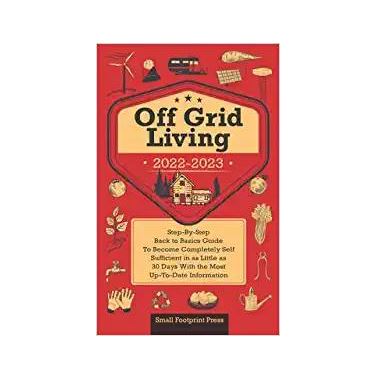
Useful Book: Off Grid Living 2022-2021 – This incredible step by step guide is a great read and gives you useful information about reaching self-sufficiency in just 30 days. Get the paperback on Amazon or read it free with a Kindle Unlimited subscription or listen to the audio version with Audible Plus membership.
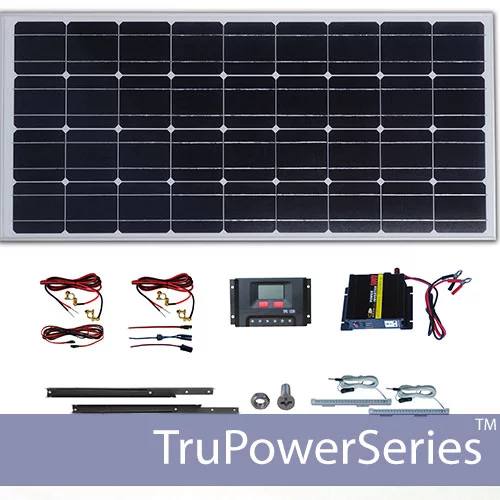
Small Solar Panel Systems: Silicon Solar – This is an excellent company that offers lots of products to get you started on your solar journey. Visit Silicon Solar.
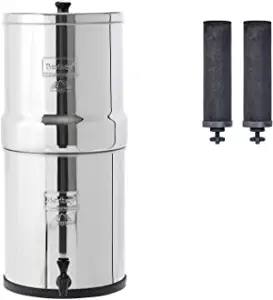
Family Water Filter: Big Berkey – For a fast, affordable water filter with no plumbing required, you can’t beat a Big Berkey gravity-fed filter like this one from Amazon.
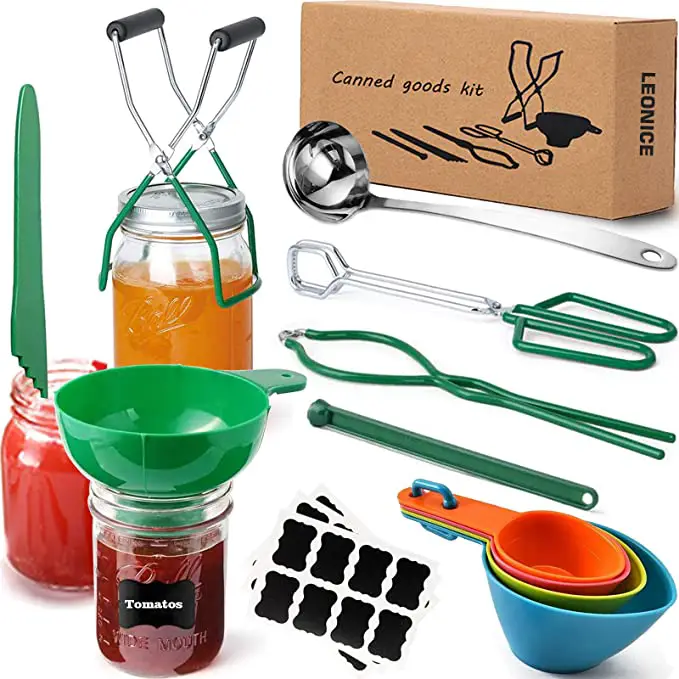
Canning Equipment – This canning starter kit, 22-quart Barton pressure canner and twelve-pack of Ball 16oz mason jars will help you preserve food as you work towards self-sufficiency.
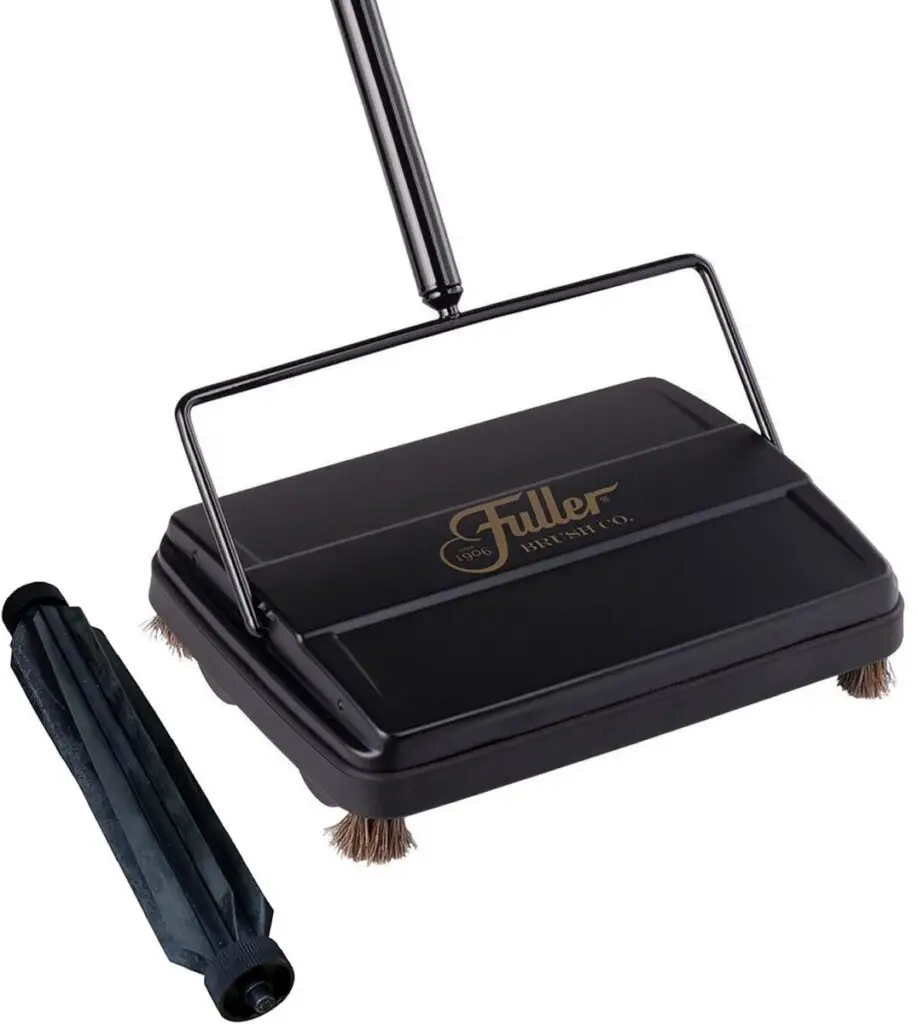
Cleaning: Fuller Carpet Sweeper –. This carpet sweeper is an ideal way to keep your home clean without using up your energy stores on vacuuming.

Handy Knife: Gerber Serrated Paraframe – This handy all-purpose knife is lightweight and ideal for all those little jobs around your home and garden.
